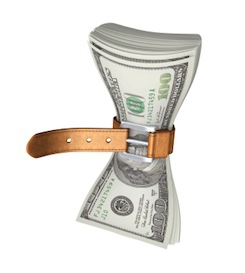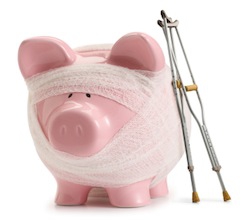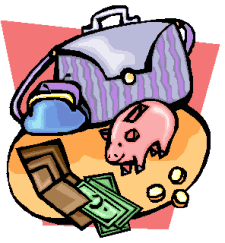Learn how to create a budget in six easy steps to help you reach your financial goals.
Finances are always a top concern for anyone with bills to pay. Yet most of us can probably rattle off half of the Ben & Jerry ice cream flavors before we can give an accurate account of our financial situations.
A budget can help with this. Creating and maintaining a budget can seem overwhelming or restrictive at first. But developing a budget is your best bet for understanding your finances and reaching your goals. And with the variety of tools available these days, you can get your budget started in the time it would take you to eat that pint of Cherry Garcia.
Step 1: Set your financial goals.
Do you want to buy a house? Go back to school? Get out of debt? Whatever your goals may be, put them in writing and then display them where they’re easily visible to you. Seeing your goals every day can be a great motivational tool.
Step 2: Select a budgeting tool.
Budgeting tools range from a simple spreadsheet to free online tools to more robust tools available for purchase. Here are a few ways to get started:
- Set up a spreadsheet using Excel. Templates can be found and downloaded here.
- Begin a simple budget using Kiplinger’s online budget worksheet.
- Set up an account with a free online budget tool, such as Yodlee MoneyCenter or Mint.com. Both of these tools can link to your financial accounts, track balances and spending, create budgets and more. Mint.com even helps you set up your financial goals.
- Purchase budgeting software, such as Quicken Deluxe, which organizes your finances, tracks saving and spending and sets up budget goals based on your spending history.
- Or talk with an accountant or financial advisor to help you make sense of your finances and develop a budget to help meet your goals.
Step 3: Track your income and expenses.
Once you have your budgeting tool set up, start inputting numbers. Keep track of all income and expenses for a month. That means ALL expenses—from your monthly mortgage payment to that 75 cents you put into the vending machine yesterday afternoon. These little spending habits can often be eye-opening once they’re down on paper.
And if you have quarterly, bi-annual or yearly payments that you know of—such as a bi-annual car insurance payment—break those down into monthly installments and put them into your budget as well. This gives you a better overall sense of where your money is going and how much you need to save each month to be prepared to make those payments.
Step 4: Review your spending.
Now that the numbers are in, take a look at them. Are there any surprises? Are you overspending in areas where you could cut back? Or perhaps you have a good chunk of change left over at the end of the month that could be invested. Review your budget and determine what changes you could make to help you reach your financial goals.
Step 5: Stick to it.
A budget does you no good unless you continue to manage it. Be sure to update your budget monthly to keep a good grasp on your finances. And, as you go through life your financial situation will likely change—you’ll need to update your budget to reflect that.
Step 6: Plan for the future.
Now that you’ve got a handle on your finances and maybe are gaining a bit of wealth, it’s time to plan for the future. Be sure you’re insured to protect against any financial disasters, start setting aside money for retirement and look into making financial investments.
This article contains general information. Individual financial situations are unique; please, consult your financial advisor or tax attorney before utilizing any of the information contained in this article.
Related Articles
- Tips To Manage Your Money When Your Married
- 7 Steps to Manage Your Money When You Have Kids
- Budget Preparation Tips
- Budgeting Whys and Wherefores
- Retirement Planning: Start the Process!
- Catch Up On Your Retirement Savings
- Should You Invest In An ETF
- Should An Annuity Be Part Of Your Retirement
- Retirement Planning: How much do I need to save?
- Retirement Planning: Tips for Saving
- Retirement Planning: Investment Options
- How To Choose A Financial Advisor
- What is an IRA?
- What is a 401k plan?
- Is a Roth IRA conversion right for you?
- Investing for beginners: The basics of how to invest your money
- Estate Planning: Why You Need A Will
- Estate Planning: Should You Create A Trust?
- Estate planning: Tax Planning For Your Estate
 Print
Print Email
Email










